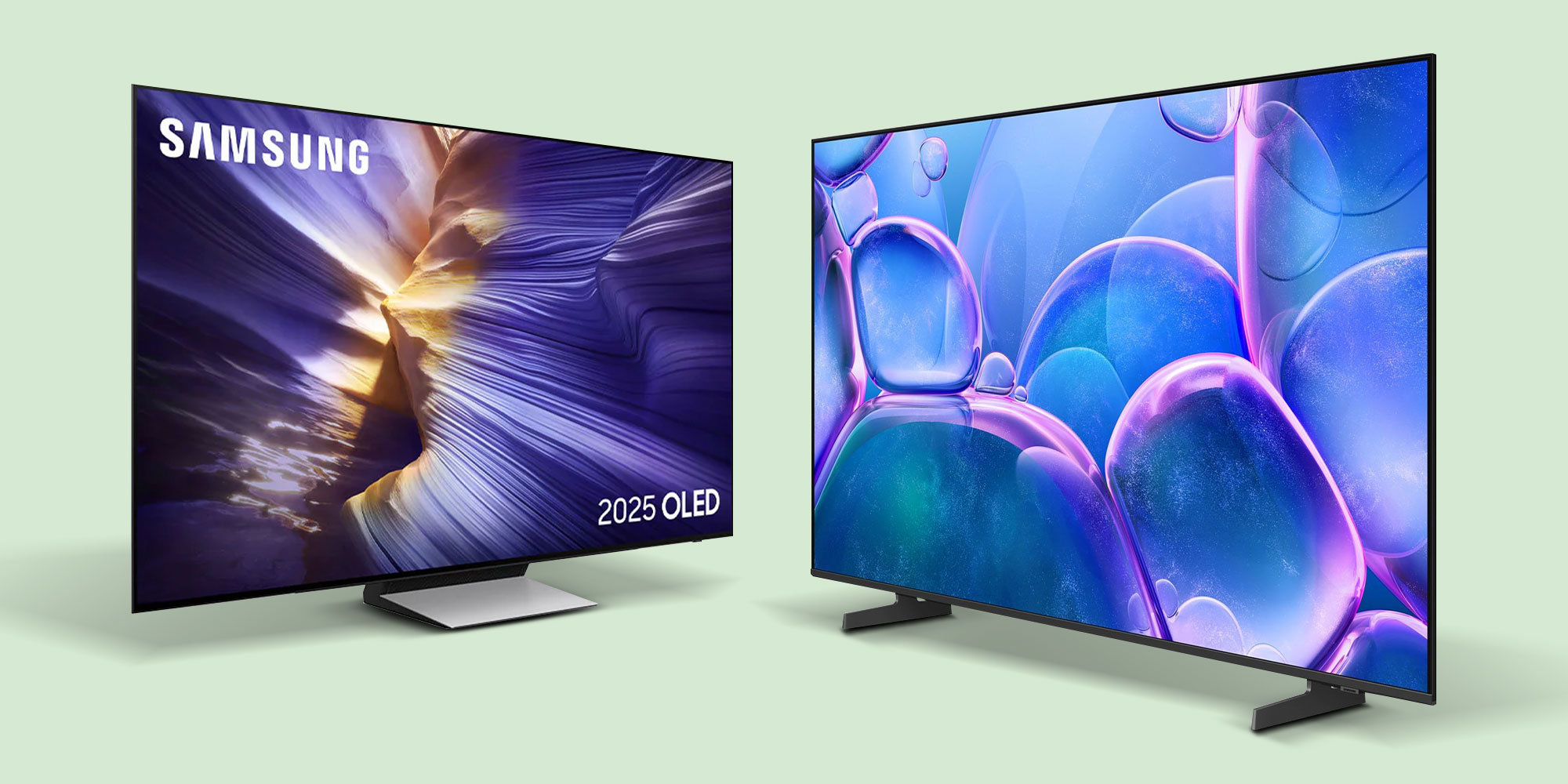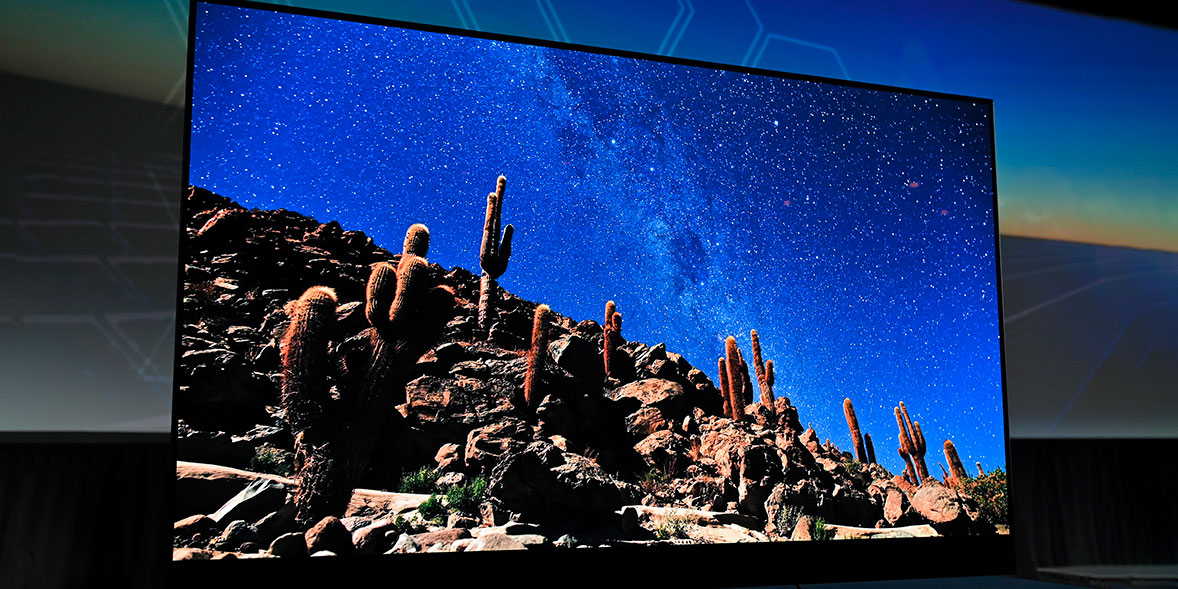Is it worth paying more for a high-end TV?

Compare an entry-level or mid-range TV to a high-end one and you'll notice remarkable consistency. The baseline for a modern TV includes 4K displays, HDR, smart features, simulated surround sound, a built-in PVR and more.
This is a good thing, but it does muddy the waters. Packing more basic TVs with features you'd expect to see on an expensive one can be used to mask poor quality. You can't tell that the speakers and screen are bad when you're shopping online, but a list of advanced HDR formats and a quantum dot display make a cheap TV stand out, even if they aren't used well.
We'll help you decide it's really worth paying a premium for your next set, how to sift through the jargon and how to make sure your money is well spent.
We review hundreds of TVs a year from the most basic 32-inch sets to the top-tier 65 inchers. Read our TV reviews to see the models worth buying.
What do you get with a high-end TV?
Features aren't the dead giveaway they used to be, but there are still a few things that mark a high-end TV from an entry-level one.
- An OLED or Neo QLED display - these displays aren't new, but they still haven't filtered down to cheaper sets.
- 120Hz (or higher) display - this is a gaming focused feature that only tends to come on high-end TVs.
- Full array backlight - not as clear an indicator as the other two, but it's most commonly found on more high-end sets.
- Advanced HDR - you do sometimes find these on cheaper models, but Dolby Vision IQ is usually the reserve of high-end TVs.
- Object tracking sound - this feature has many names depending on the brand, but it broadly means the TV can produce sound that comes from different parts of the screen.
You'd think was price was the most obvious indicator, but Hisense and TCL has a habit of undercutting the likes of LG and Samsung releasing relatively high-end sets for less than you might think. Still, the majority of high-end TVs are costly, and, in isolation, TCL and Hisense's high-end TVs are more expensive than their entry-level sets, too.
They may not be high-end, but you can get good quality for less than you might expect. Take a look at our favourite cheap TVs.
Are high-end TVs worth it?
Generally, yes. The best TVs we test every year are high-end, they usually have an OLED or Neo QLED display and they cost a lot. Much of what separates a good TV from a bad one is happening behind the scenes. A high-end TV gets more attention at the manufacturing stage, its processor is more powerful and capable of rendering a more precise image, and the speakers and screen are tuned for longer to make the overall quality that bit better.
You can't see this when you're looking up a TV online. It doesn't help that a manufacturer's description of a TV makes every one sound like a perfect, revelatory piece of tech.
Look at these two quotes from LG TVs at each end of its range and try and figure out which one's high-end.
- '100% Colour Volume and 100% Colour Fidelity certified. Enjoy accurate, vibrant colours even in sunlight or dark environments.'
- 'Vibrant colours and brightness takes the screen resolution to new heights. Jump into elevated image quality with sharper contrast.'
It's the first one, but TV descriptions are written to be almost interchangeable. Despite each brand's glowing description we know there can be a gulf in quality separating an entry-level TV from a high-end one, but not always.
We review TVs from 32 up to 65 inches, use our TV size guide to see what model is right for you.
Where do expensive TVs excel?

When you're paying more and not necessarily getting more, not in terms of features anyway, your expectation of a better quality viewing experience understandably increases.
To make the clearest comparison possible we're looking at 55-inch TVs that cost more than £1,000 (including any outliers from cheaper brands) and comparing them with 55 inchers under £1,000 to see how much better a high-end TV is. We're also only including 4K sets.
Picture quality
| Under £1,000 | Over £1,000 | |
|---|---|---|
| SD rating | 4 stars | 4 stars |
| HD rating | 4 stars | 5 stars |
| 4K HDR rating | 4 stars | 5 stars |
| Overall rating | 4 stars | 4 stars |
There's a clear improvement with high-end models, but it's relatively close in some areas. That shows that there are strong options for under £1,000, but you're more likely to get a high scorer if you spend more.
The numbers show a pattern of consistency to more high-end models, too. On TVs costing £1,000 or more, the lowest picture quality rating from our HD tests (the most commonly watched resolution) was four stars, but some models under £1,000 got just two. The bar is higher on high-end TVs and far fewer models in the upper price ranges fail to reach it.
Sound quality
| Under £1,000 | Over £1,000 | |
|---|---|---|
| Sound quality | 3 stars | 4 stars |
Sound follows a similar pattern as picture with a clear improvement in more expensive TVs.
Only three models costing £1,000 or more got less than four stars. but cheaper TVs are far more variable with 19 scoring three stars, and a single model getting just one star.
Viewing angle
| Under £1,000 | Over £1,000 | |
|---|---|---|
| Viewing angle | 3 stars | 4 stars |
High-end TVs still come out on top here, but the margin is closer. 12 TVs over £1,000 scored three stars for viewing angle and are closer to mid-range quality in this regard.
The very bottom of the market still shows this is an area where basic TVs struggle. 10 models scored just two stars and there average cost is less than £500.
Ease of use
When it comes to navigating menus, changing channels and setting your TV up, you won't find much difference between a high-end and low-end model. That's because manufacturers tend to use the same operating system and remote across their entire lineups. There are some exceptions where the most basic TVs have a different remote, but typically TVs from the same manufacturer will get the same ease of use rating regardless of its price.
Overall scores
| Under £1,000 | Over £1,000 | |
|---|---|---|
| Average score | 63% | 74% |
This is the starkest difference. When you put all these factors together those star rating improvements coalesce into a significant improvement in score.
How much should you spend for high-end quality?
More expensive TVs tend to be better, but exactly how much you need to spend to get that bump in quality isn't fixed. It differs depending on screen size and one of the great things about testing a brands entire range is we can see exactly where there TVs start to shine brightest.
- 40 to 43-inch TVs – the smallest 4K TVs are where you see the biggest gulfs in quality. There isn't much of a mid-range here, so you're getting a lot of entry-level models and then a handful of high-end ones. To get a Best Buy in this size range you're looking at around £900, but you can find Great Value TVs (models that score at least 65% and cost less than average) for around £400.
- 48 to 50-inch TVs – you've got more choice at this size and a bigger spread of high-scoring models. If you buy at the right time when TVs are at their cheapest, you should expect to spend at least £800 for a Best Buy. Great Value models are available for far less though. You can find decent quality 50 inchers for as little as £450.
- 55-inch TVs – your choice of Best Buys increases enormously here because some high-end ranges only start at 55 inches. To get top quality here you're going to need to spend around £1,200, but there are a handful of superb outliers that cost as little as £600.
- 65-inch TVs – the big jump in size from 55 to 65 inches means a sizeable increase in price, too. For a high-end set you'll be looking at at least £1,600. If you don't need all the bells and whistles of a high-end TV, you'll find good quality for around £700.
Finding a TV that appears to have a raft of high-end features for less than we've listed here should ring alarm bells. More often than not, these flashy TVs are built on shakey foundations and the underlying quality isn't there. It's easy to give a TV advanced HDR formats and gaming features for less if you've cut corners when it comes to picture and sound quality.
A high price and flashy features doesn't guarantee good quality either. If you're got the budget for a high-end TV then there's really no reason not to get one of the best TVs out there.
Always check our TV reviews before you buy to make you're getting the best model for your budget.



